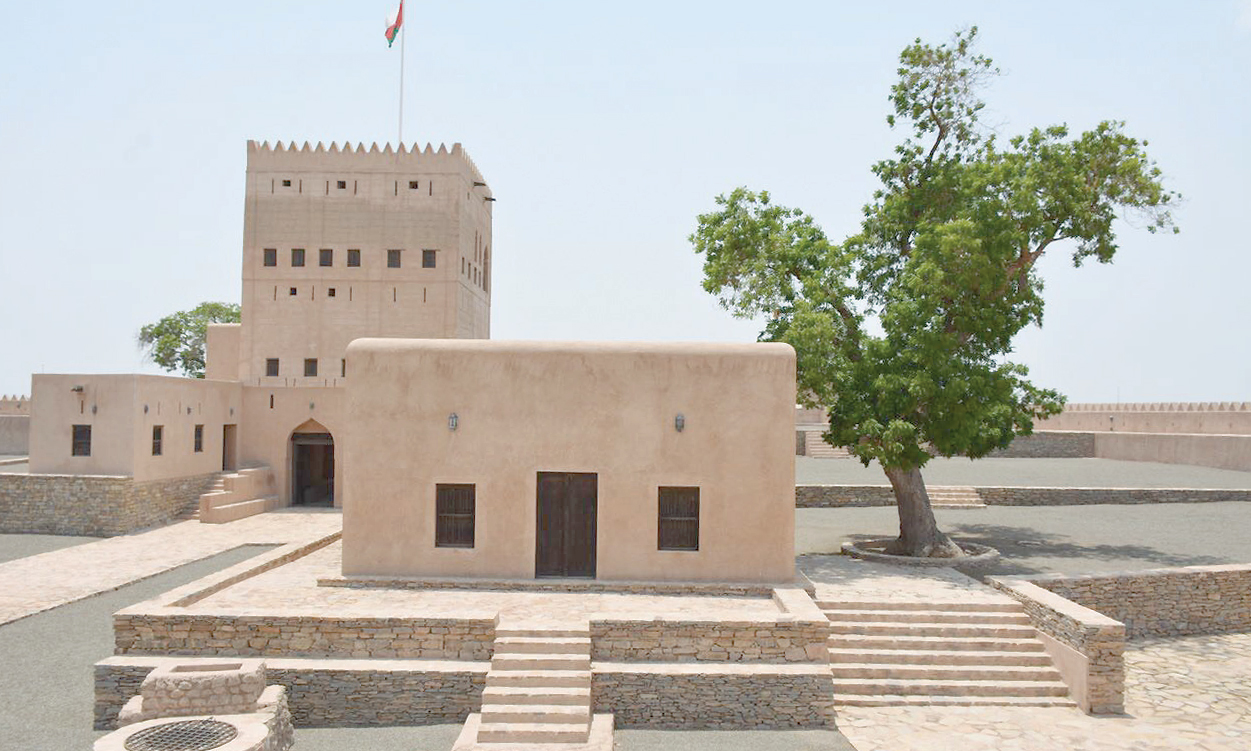

THERE are many tourist attractions in the Sultanate including natural landmarks, tall towers, castles and forts, which are unique in their designs.
The Wilayat of Liwa in the north of the Sultanate, bordering on the south by the Wilayat of Suhar and in the north by the Wilayat of Shinas, is famous for its stunning views, aflaj, valleys, archaeological sites and historic
landmarks.
It is famous for Liwa Fort, which is located about one and a half kilometres from the centre of the wilayat near the sea.
Liwa, which is situated 265 km away from the capital city Muscat, is renowned for its maritime history as the sea was the inhabitants main source of livelihood.
The coastal area of the wilayat stretches from the village of Ghadafan till Al Rumaila, crossing other places like Al Ghazail, Al Hadd, Al Ga’shami, Mikhailif, Hillat Al Shaikh, Al Baldah, Al Jadida, Harmul, Al Zahya, Naber and Oqdat Al Mawane.
The wilayat has an ancient history that embraces deep-rooted heritage landmarks including Liwa Castle, which has been restored by the Ministry of Heritage and Culture in 1994. There is, also, Fazah Fort which is an attractive destination visited by many tourists.
Agriculture and fishing are the main professions practiced in Liwa, in addition to pottery, digger industries, traditional boat industries and Omani halwa. With regard to the agriculture sector, Liwa is characterised for the abundance of crops like lemon, mango, bananas, tomatoes and palm.
One of the prominent sites in the wilayat is the shrine of Imam Al Rabee bin Habib al Farahidi.
The fortress of Awlad Ya’rab, built of white clay, is located on the beach in the Harmul area. The area also has a number of rural features such as springs, aflaj and caves.
Ain al Azam cave faces the creek and is surrounded by mangrove trees, while Jebel Abu Kahif is home to some of the largest caves in the wilayat.
The commercial sector is considered the most important economic activity as the wilayat sees flourished local markets and hypermarkets.
The existence of Suhar Industrial Port has led to architectural expansion and commercial flow in the wilayat as Liwa closely adjoins the Wilayat of Suhar.
The first phase of setting a new residential city is going on to compensate those citizens affected by the Suhar Industrial Port.
The new residential city in Liwa will accommodate about 30,000 people.
There will be eight schools, health centres, two huge mosques and 11 small mosques, according to the Ministry of Housing and Urban Planning.
Oman Observer is now on the WhatsApp channel. Click here



